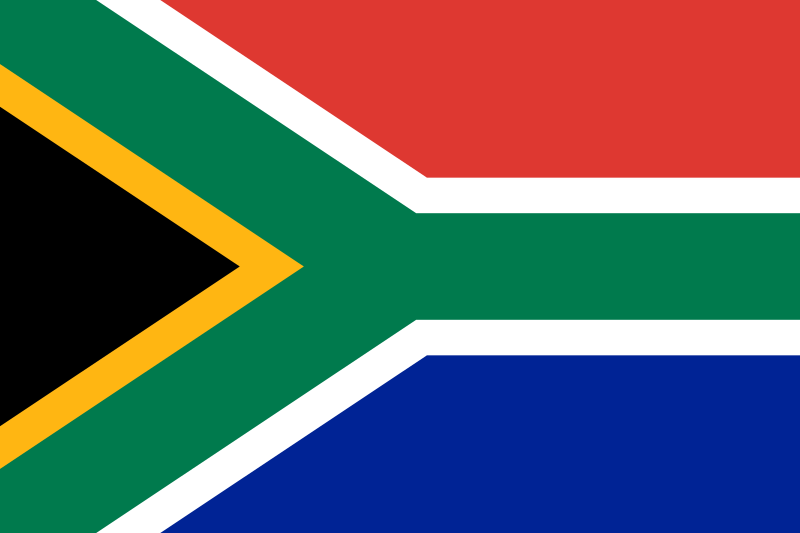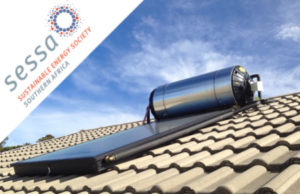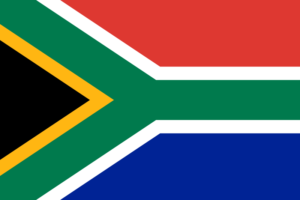South Africa: Planned Rollout with 650,000 Solar Water Heaters
September 4, 2013
Solar water heater manufacturers in South Africa are being kept busy answering to public tenders, which may not be awarded in the end. This is the impression one gets when reading through the publications of national utility Eskom and the Department of Energy (DoE). The reason behind it: The announcement by the government to start a mass rollout of low-pressure solar water heaters in designated areas. Completely subsidised solar water heaters for low-income households are to reduce the electricity demand of the national grid and to create jobs. The photo shows a housing area for the elderly with a typical non-pressure 110 litre vacuum tube collector systems, which should also be used for the rollout.
So far, the technology dominating the Eskom subsidy scheme has been the low-pressure solar water heater. According to a presentation from March 2013 by Raj Pandaram, former Programme Manager at Eskom (see the following table), the scheme had subsidised 234,724 low-pressure systems over the last 6 years (72 % of all applications). The province with the most subsidised SWHs was Gauteng (28 %) with the cities Johannesburg and Pretoria, followed by the two coastal provinces KwaZulu-Natal (20%) and Eastern Cape (16 %).
|
Number of rebated units |
||
| Low-pressure residential SWHs |
234,724 |
72% |
| High-pressure residential SWHs |
60,282 |
19% |
| DOE-funded low-pressure projects |
30,768 |
9% |
| Total |
325,774 |
|
Source: Presentation of Raj Pandaram, Eskom, 7 March 2013
The DoE and Eskom would like to speed up solar water heater installations in the country. Eskom published the first related tender in May 2013, after one year of consultation and four reviews (see the attached PDF). A 20-page document summarises the requirements for solar water heater suppliers, such as:
- Suppliers must be able to manufacture and supply at least 1,500 complete systems per month in South Africa using local raw material
- Suppliers must have at least 1,000 completed kits in stock
- Only systems with SABS Mark certification are eligible
- 5-year warranty on all components
- All systems could be preassembled at a warehouse. The warehouse is to be set up within a 30 km radius of the allocated installation site.
Offers were accepted until June 2013. The planned target was to finance and install 17,500 systems, according to unofficial information from the DoE. At the beginning of September, the offers were still “under review” and another “compulsory Request for Registration and Information (RFRI)” was published by the DoE on 16 August 2013.
“I am sure that the tender from May will not be awarded, since they have already started the new one,” the Managing Director of a solar water heater manufacturer says. According to Khanyiso Zihlangu, who is in charge of the solar thermal branch at the DoE, the RFRI is only a “preparation round for a real large tender to follow”. The 18-page document (see the attached PDF) on the RFRI sets even greater targets: “The government has taken it upon itself to provide a market of about 650,000 SWH systems (520,000 low-pressure and 130,000 high-pressure) between 1 April 2013 and 31 March 2015.”
The submission period for the RFRI was set until 5 September 2013 and a compulsory RFRI briefing meeting was held on 28 August 2013. During this meeting, solar thermal system suppliers called for a clear definition of what constitutes a local component. The DoE’s solar water heating team announced the “local content verification and the issuance of local content verification certificates” for 13 September. It seems likely that only a few bigger suppliers will be certified, as the application form of RFRI requires companies to offer a system price when delivering up to 15,000 locally produced solar water heater systems per month.
More information:
http://www.eskomidm.co.za
http://www.energy.gov.za


